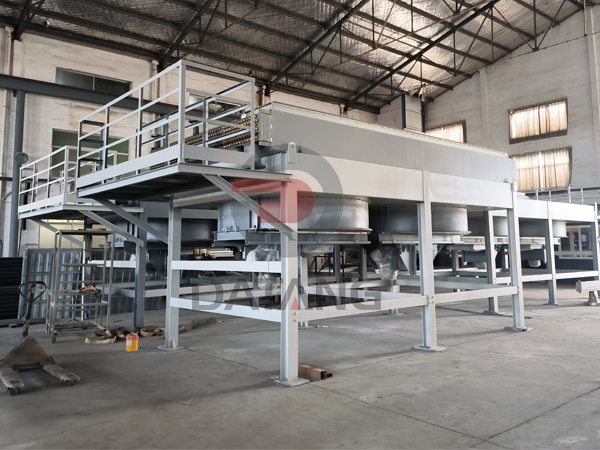Air cooled heat exchanger for refining unit in large oil refinery

- Leave Your Message
Working requirements
Medium: high-temperature oil and gas (380-420℃, sulfur content 0.5%);
Pressure: 1.8-2.2MPa;
Goal: Cool oil and gas to below 150℃ to solve coking and corrosion problems.
Scheme design
Material combination: The base tube is made of 316L stainless steel (sulfur corrosion resistant), and the fins are made of 3003 aluminum strip (salt spray oxidation resistant);
Specifications:
Base tube: 32×3mm (outer diameter×wall thickness), single length 12m;
Fins: height 15mm, fin spacing 3mm, fin thickness 0.4mm;
Number of fins: 180 fins per air cooler, total heat exchange area 5280m²26;
Process optimization:
The fin embedding depth is 1.0mm, the contact area is increased by 40%, and the contact thermal resistance is reduced;
The surface is sprayed with high-temperature resistant epoxy resin coating (thickness ≥50μm), which extends the corrosion resistance life to more than 8 years.
Effect
Heat exchange efficiency: The efficiency of the finned tube air cooler is increased from 65% to 82% of traditional equipment, saving 12,000 tons of steam consumption annually; Anti-coking: The uniform flow channel design between the fins reduces dust accumulation, and the cleaning cycle is extended from 3 months to 1 year; Corrosion resistance: The combination of 316L base tube + coating makes the tube wall corrosion rate ≤0.05mm/year, reducing maintenance costs by 30%.
Comparison of typical problem solving
| Problem Type | Traditional Bare Tube Solution | Embedded Finned Tube Solution |
|---|---|---|
| Low Heat Transfer Efficiency | Require 20% additional heat transfer area25 | 25-35% efficiency improvement in same volume25 |
| Coking & Blockage | Manual cleaning every month35 | Automated blowing + semi-annual inspection35 |
| Material Corrosion | Carbon steel tube lifespan ≤3 years35 | Stainless steel composite tube lifespan ≥8 years35 |
This solution achieves a double breakthrough in the efficiency and reliability of the cooling system of the refinery unit through the selection of highly corrosion-resistant materials and compact fin design, meeting the energy-saving and consumption-reduction and long-term operation requirements of large refineries.

